Bustard and Korhaan are large and highly terrestrial birds mainly associated with dry open country. They range in length from 40 to 150 cm (16 to 59 in). They make up the family Otididae (formerly known as Otidae). Bustards are omnivorous and opportunistic.
Korhaan is the colloquial common name locally given to the smaller species of bustards
Of the 25 bustard species found globally, 11 are found in southern Africa, including six species found nowhere else in the world.
Despite the precarious conservation status six of the country’s eleven species listed occurs in the South African Red Data Book.
Kori bustard / Gompou (Ardeotis kori) (Found in Kruger) From here: https://africawild-forum.com/viewtopic.p ... 02#p150102
The Kori bustard has two subspecies, with one occurring in north-eastern Africa, while the other mainly occurs in southern Africa, living in a wide variety of mainly dry habitats. The male Kori Bustard is the heaviest living creature capable of flight. Eats a wide variety of animals and plant products, often eating hard materials, such as stones, pieces of bones and even bullet shells and broken glass! The male does a courtship display to multiple females, after which it mates with some of them, all incubating and parenting are left to be done by the female. The 1-2 chicks are able to fly when they are 3-4 months old, but they remain dependent on their mother until the following breeding season, when they are 12-18 months old.
Denham's bustard / Veldpou (Neotis denhami) Here: https://africawild-forum.com/viewtopic.p ... 65#p152565
The Denham's bustard is widespread in the Afrotropics, from western to southern Africa, where it is scarce to locally common in grassland, fynbos and cultivated areas. It is omnivorous, feeding on a wide range of animals, including grasshoppers, weevils, spiders, and even snakes, as well as plant products, including grass, leaves and flowers. It is polygynous, the male mating with multiple females, who will take on all the incubation and chick rearing duties. It lays 1-2 eggs, which hatch after about 23-25 days. The chicks are cared for by their mother, who will catch food and put into in front of the chicks, although later they start foraging for themselves.
The Ludwig's Bustard / Ludwig se pou (Neotis ludwigii) From here: https://africawild-forum.com/viewtopic.p ... 31#p157331
Is a species of bird in the bustard family, and named after Baron von Ludwig. It is a medium-to-large sized species. It is found in Angola, Botswana, Lesotho, Namibia, and South Africa. Its habitats include semi-arid grasslands.
The Ludwig's Bustard can weigh from 3 to 7.3 kg (6.6 to 16.1 lb), with a mean of 6.3 kg (14 lb) for the much larger male and 3.4 kg (7.5 lb) for the female. Length ranges from 76 to 85 cm (30 to 33 in) in females and 80 to 95 cm (31 to 37 in) in males.It lives largely on large insects (mainly locusts), as well as flowers and seeds. Although it lives in semi-arid areas it seems to shift locally to follow the presence of rainfall. During extreme concentrations of rainfall, as many as 230 Ludwig's Bustards have been seen at once feeding on locusts.
This little-known species is now considered endangered. It is thought to be the bird species in Southern Africa most seriously at risk of dying from collisions with power lines.
Black-bellied korhaan / Langbeenkorhaan (Lissotis melanogaster) (Found in Kruger) From here: https://africawild-forum.com/viewtopic.p ... 10#p152110
The Black-bellied bustard occurs from Senegal east to Ethiopia, extending south to southern Africa, where it is uncommon to locally common in a wide variety of mainly grassy habitats. Its diet is little known in southern Africa, but elsewhere it is omnivorous, mainly feeding feeding on small invertebrates, such as locusts, grasshoppers and beetles, as well as vegetable matter, such as fruit, seeds and leaves. The male does an elaborate courtship display to multiple females, whom he mates with afterwards. The incubating and parenting is done solely by the female, who protects intruders who get to close to the "nest", which is a bare scrape in the ground, with wings outstretched.
Red-crested korhaan / Boskorhaan (Lophotis ruficrista) (Found in Kruger) From here: https://africawild-forum.com/viewtopic.p ... 05#p149705
The Red-crested korhaan is near-endemic to southern Africa, being uncommon to locally common in a range of woodland habitats. It is omnivorous, feeding on invertebrates, especially termites, beetles and grasshoppers, and plant matter, especially seeds and fruit, foraging on the ground, picking up food items with its bill. The male puts on a spectacular courtship display to multiple females, who solely incubate the eggs and raise the chicks. It lays 1-2 eggs, which are incubated solely by the female, for about 22 days, and little is known about the chicks.
Southern black korhaan / Swartvlerkkorhaan (Afrotis afra) Here: https://africawild-forum.com/viewtopic.p ... 02#p153502
The Southern black korhaan is endemic to South Africa, being found in the Western, Eastern and Northern Capes. It is common to uncommon in the remnants of renosterveld and strandveld in the Western Cape, and nama karoo in the Northern Cape. It feeds on insects, small reptiles and plant material, foraging on the ground and picking up food items with its bill. It is polygynous, meaning that the male mates with multiple females, who do all the incubation and caring of the chicks. Its 1-2 are laid eggs directly on the ground, often so that it conceals the incubating female.
Northern black korhaan / Witvlerkkorhaan (Afrotis afraoides) From here: https://africawild-forum.com/viewtopic.p ... 03#p153703
The Northern black korhaan is endemic to southern Africa, and is uncommon to common in a wide variety of habitats. It feeds mainly on insects, such as termites, grasshoppers and beetles, but it also eats plant products, such as seeds. The male vigorously defends his displaying territory from other males, attacking them with his wings and mating with multiple females, who solely incubates the 1-3 eggs and raises the chicks. Amazingly, the chicks can fly when they are only half grown!
Rüppell's korhaan / Woestynkorhaan (Eupodotis rueppellii)
The Rüppell's Korhaan or Rüppell's Bustard (Eupodotis rueppellii) is a species of bird in the family Otididae. It is native to southwestern Africa in Angola and Namibia, occurring in semi-desert habitats.It is a small bustard, only 60 cm long. The head and neck are grey, with black stripes down the throat (less marked in females), through the eye, and on the sides of the neck, and white cheeks. The body is sandy brown above, and white below. The legs are sandy yellow-brown.
Rüppell's Korhaan is named in honor of Eduard Rüppell, a 19th-century German explorer, collector, and zoologist.
White-bellied korhaan / Witpenskorhaan (Eupodotis senegalensis)
It is rather small for a bustard, 48 to 61 centimetres (19 to 24 in) long. All are tawny brown above and on the breast and white on the belly, with cream-coloured legs; juveniles have light brown necks and heads, and adults have blue-grey necks. The adult female has a grey crown, a brown and buff line below the eye, and black speckling on the throat. The adult male has a black crown, black lines on the white cheeks, a black throat patch, and a pinkish-red bill. The call, often given in the early morning and late evening, has been described as "a very loud, guttural k'whuka WHUKa, k'wuka WHUKa..., or k'warrak, k'warrak...
This species is usually seen in pairs or family groups, as young stay with their parents much longer than those of other bustards in the region.
Karoo Bustard / Vaal Korhaan (Eupodotis vigorsii) Here: https://africawild-forum.com/viewtopic.p ... 80#p153680
The Karoo Korhaan is endemic to southern Africa, with the largest numbers found in the shrubland of the Nama Karoo (lower concentrations in the Succulent Karoo, and absent from grasslands and the coastal areas of Namaqualand). The bird’s range extends from the Fish River in the Eastern Cape, the western Free State, through the Karoo to the southern half of Namibia. To the south it also occurs in cultivated fields on the Agulhas Plain.
It is a medium- to large-sized bird, about 60 cm long from tip to tail, standing about 25 cm high at the shoulder, with quite a long neck of about 14 cm.
Blue korhaan / Blou korhaan (Eupodotis caerulescens
The Blue Korhaan or Blue Bustard (Eupodotis caerulescens) is a species of bird in the Otididae family, found in Lesotho and South Africa. Its call is a series of frog-like croaks, usually uttered in flight. Its natural habitat is plateau grassland, dry shrubland, arable land and pastureland. It is threatened by habitat loss.
Please post species found in other parts of the world
Sources:Biodiversity explorer
Wikipedia
Western Cape birding
Bustards & Korhaan - Bird of the Month November 2013 *
-
Twigga
- Posts: 999
- Joined: Fri Jun 01, 2012 11:43 am
- Country: Sunny SA
- Location: So close, but yet so far...
- Contact:
Bustards & Korhaan - Bird of the Month November 2013 *
Last edited by Twigga on Wed Nov 20, 2013 1:03 pm, edited 3 times in total.
Somewhere in Kruger
- Amoli
- Posts: 6032
- Joined: Fri Jun 01, 2012 4:30 am
- Country: South Africa
- Location: Kempton Park
- Contact:
Re: Bustard & Korhaan - Bird of the Month November 2013
Of the 25 bustard species found globally, 11 are found in southern Africa, including six species found nowhere else in the world.
We are so fortunate.
Great choice Twigga..


Red crested Korhaan

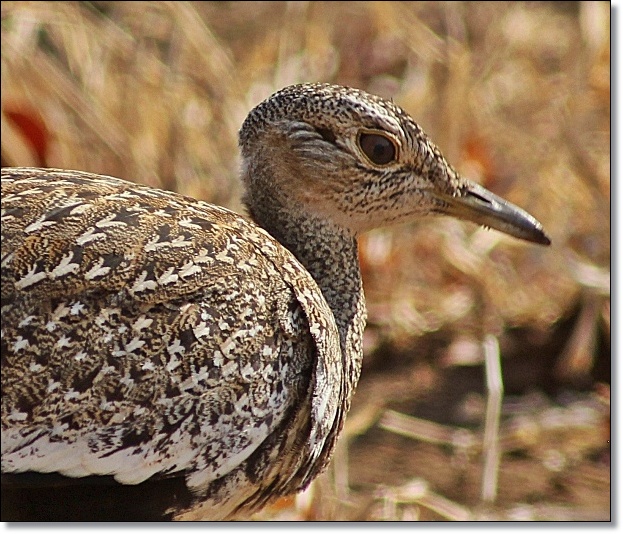
We are so fortunate.
Great choice Twigga..
Red crested Korhaan


Pretoriuskop
Satara
Shingwedzi
20-30 Dec 2014
Satara
Shingwedzi
20-30 Dec 2014
-
Twigga
- Posts: 999
- Joined: Fri Jun 01, 2012 11:43 am
- Country: Sunny SA
- Location: So close, but yet so far...
- Contact:
Re: Bustards & Korhaan - Bird of the Month November 2013
Red-crested Korhaan
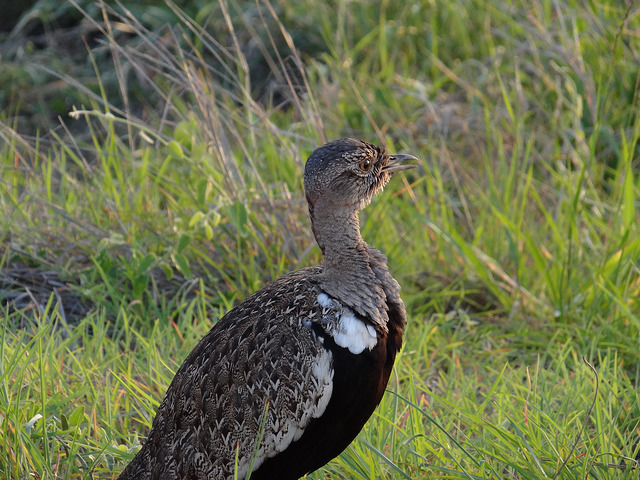
Wildtuin Des 2011 295 by twigga2011, on Flickr

Wildtuin Des 2011 296 by twigga2011, on Flickr

Wildtuin Des 2011 295 by twigga2011, on Flickr

Wildtuin Des 2011 296 by twigga2011, on Flickr
Last edited by Twigga on Fri Nov 01, 2013 7:39 pm, edited 1 time in total.
Somewhere in Kruger
- nan
- Posts: 26476
- Joined: Thu May 31, 2012 9:41 pm
- Country: Switzerland
- Location: Central Europe
- Contact:
Re: Bustards & Korhaan - Bird of the Month November 2013
Kruger - Red-crested Korhaan/Outarde houppette
The Diva

The Diva

Kgalagadi lover… for ever
https://safrounet.piwigo.com/
https://safrounet.piwigo.com/
- Amoli
- Posts: 6032
- Joined: Fri Jun 01, 2012 4:30 am
- Country: South Africa
- Location: Kempton Park
- Contact:
Re: Bustards & Korhaan - Bird of the Month November 2013
Red crested Korhaan
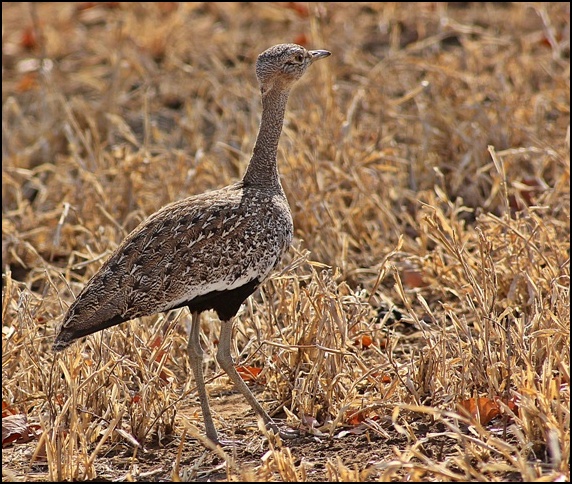 Aug 2012
Aug 2012
 Aug 2012
Aug 2012Pretoriuskop
Satara
Shingwedzi
20-30 Dec 2014
Satara
Shingwedzi
20-30 Dec 2014
- Lisbeth
- Site Admin
- Posts: 65878
- Joined: Sat May 19, 2012 12:31 pm
- Country: Switzerland
- Location: Lugano
- Contact:
Re: Bustards & Korhaan - Bird of the Month November 2013
Red-crested korhaan - KTP
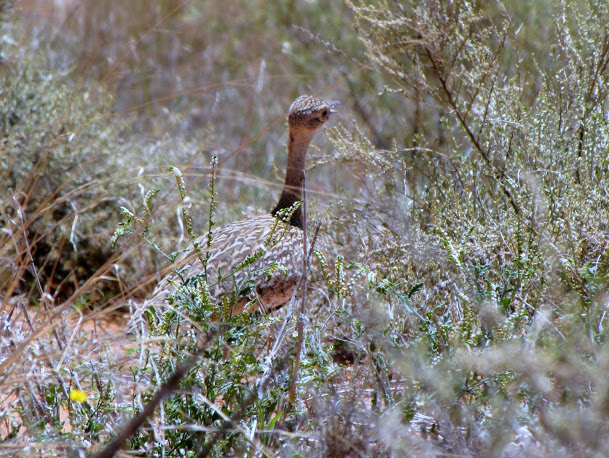

Last edited by Lisbeth on Fri Nov 01, 2013 6:14 pm, edited 1 time in total.
"Education is the most powerful weapon which you can use to change the world." Nelson Mandela
The desire for equality must never exceed the demands of knowledge
The desire for equality must never exceed the demands of knowledge
- Sprocky
- Posts: 7110
- Joined: Sat May 19, 2012 12:29 pm
- Country: South Africa
- Location: Grietjie Private Reserve
- Contact:
Re: Bustards & Korhaan - Bird of the Month November 2013

Last edited by Lisbeth on Fri Nov 01, 2013 6:21 pm, edited 1 time in total.
Sometimes it’s not until you don’t see what you want to see, that you truly open your eyes.
- Sprocky
- Posts: 7110
- Joined: Sat May 19, 2012 12:29 pm
- Country: South Africa
- Location: Grietjie Private Reserve
- Contact:
Re: Bustards & Korhaan - Bird of the Month November 2013
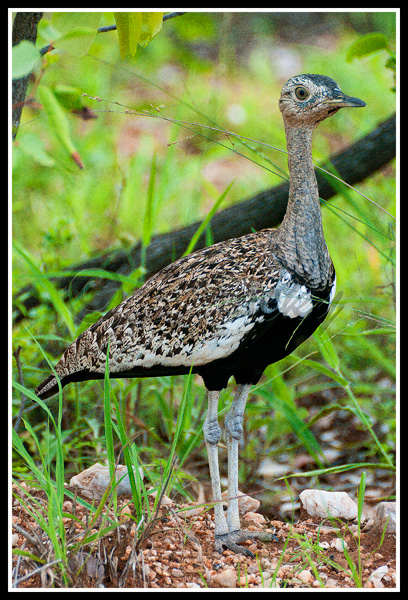
Sometimes it’s not until you don’t see what you want to see, that you truly open your eyes.
- Sprocky
- Posts: 7110
- Joined: Sat May 19, 2012 12:29 pm
- Country: South Africa
- Location: Grietjie Private Reserve
- Contact:
Re: Bustards & Korhaan - Bird of the Month November 2013
Back to the Korhaans for a bit...
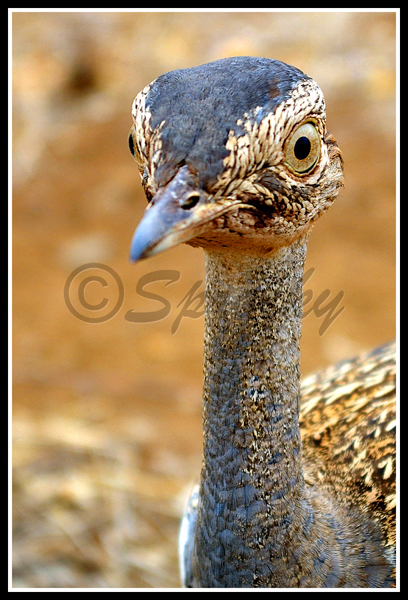
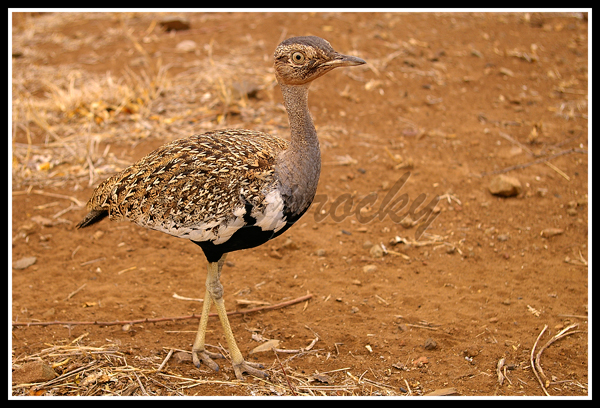


Sometimes it’s not until you don’t see what you want to see, that you truly open your eyes.
- Sprocky
- Posts: 7110
- Joined: Sat May 19, 2012 12:29 pm
- Country: South Africa
- Location: Grietjie Private Reserve
- Contact:
Re: Bustards & Korhaan - Bird of the Month November 2013

Sometimes it’s not until you don’t see what you want to see, that you truly open your eyes.


